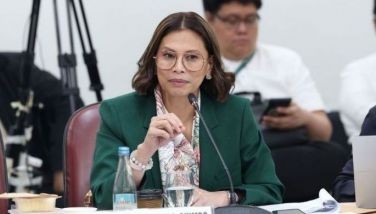Rulings from the Hague: A mere piece of trash paper?
MANILA, Philippines - After a three-year wait, the Permanent Court of Arbitration (PCA) rendered its ruling on the maritime dispute between the Philippines and China on July 12, 2016. The five-judge tribunal unanimously ruled in favor of the Philippines on almost all of the claims in made against China.
The PCA rendered China’s claim to historic rights through its nine-dash line in the South China Sea as contrary to international law. It determined that none of the Spratlys are legally islands because they cannot sustain a stable human community or independent economic life. Finally, the PCA found China of guilty damaging the marine environment by building artificial islands of illegally preventing Filipinos from fishing and conducting oil explorations in the Philippines’s Exclusive Economic Zones (EEZ).
Despite their overwhelming legal victory and the fact that the July 12, 2016 PCA ruling was the most anticipated decision of any international court or tribunal on the law of the sea, officials of the Duterte administration met the decision with sober, cautious, and even muted reaction. Philippine Foreign Affairs Secretary Perfecto Yasay Jr. called for restraint and sobriety among the Filipinos who were euphoric about their country’s decisive legal victory against an expansionist power in East Asia, China.
Officials of the Duterte administration met the decision with sober, cautious, and even muted reaction.
The Philippine government’s cautious reaction to the PCA awards might be due to the Duterte administration’s fear that flaunting its legal victory against China might force the later to react adversely against the country’s fishermen and the Armed Forces of the Philippines’s (AFP) units stationed on some of island occupied by the Philippines in the South China Sea.
This may also because of the government’s realization that it cannot sly implement the PCA’s rewards because of the weakness of the Philippine Navy (PN) and the Philippine Coast Guard (PCG) compared with the large and well-equipped Chinese naval and civilian presence in the South China Sea.
Discovering the Philippine maritime domain
In December 2012, six months after the tense Scarborough Shoal stand-off between Philippine and Chinese civilian vessels—then President Benigno Aquino III signed into law Republic Act (RA) 10349 extending the AFP modernization program of 1995. The implementation period of the original AFP modernization law Republic Act 7898 expired in December 2011 without any significant arms acquisition for the Philippine military. RA 10349 extends the military modernization program up to 2027, to give the PN and the Philippine Air Force (PAF) ample time to develop and acquire of new weapon systems needed for maritime security.
The implementation period of the original AFP modernization law Republic Act 7898 expired in December 2011 without any significant arms acquisition for the Philippine military.
The March 2015 Defense Planning Guidance for 2016 to 2022 emphasized the importance of defending “the country’s territorial integrity and sovereignty, specifically in the West Philippine Sea (South China Sea)” which accordingly “poses the foremost security challenge” to the Philippines and the AFP. Thus it stressed the need to maximize all available resources at the government’s disposal to achieve a credible defense posture in territorial defense and maritime security.
Such defense posture requires enhancing the AFP’s capabilities, prioritizing its needs, and gradually restructuring its forces for territorial defense. The long-term goal, according to the earlier 2011 AFP’s Strategic Intent, is to develop the force structure and capabilities enabling the Philippine military to maintain a “credible deterrent posture against foreign intrusion or external aggression, and other illegal activities while allowing free navigation to prosper.” Specifically, the AFP plans to develop the following limited capabilities: a) enhancing maritime domain awareness; and b) joint operations between the PAF and PN for limited naval interdiction capabilities.
The above mentioned targets can be translated into two mundane yet enabling tasks for the Navy. One, the PN can monitor the Philippines’s vast maritime territory. It should build the necessary surface and air capability to survey and monitor Philippine controlled islands in the South China Sea and prevent unoccupied island/reefs from being occupied other claimant states.
Another is the PN can develop the necessary capabilities to deter external threats and protect the country’s maritime interests. It must develop an effective force presence in the maritime domain that exhibits competence to defend the territory, if necessary.
In building up the capabilities of the PN, the Aquino administration sinks its teeth into challenging China’s expansive claims in the South China Sea as the latter directly encroaches into the country’s EEZ. The Philippines’s territorial defense goal is very modest--to develop a credible posture for territorial defense and maritime security through building a competent force capable of defending the country’s interests and the land features it occupies in the South China Sea.
Unfortunately, the PN’s goal of developing a credible defense capability is hampered by a still tedious procurement process and more importantly, limited defense budget. So far, the Philippine government acquired two second-hand U.S. Coast Guard Cutters (The BRP Gregorio Del Pilar and the BRP Alcaraz), a Landing Craft Utility (BRP Tagbanua) and three Augusta Westland AW 109 helicopters. Though the PN has acquired six Multi-Purpose Attack Crafts (MPAC), the DND has postponed the purchase of missile-armed MPAC until after the Department of Budget and Management (DBM) finally releases the funds.
The Philippine Navy's goal of developing a credible defense capability is hampered by a still tedious procurement and more importantly, limited defense budget.
The challenge to the Duterte administration
A crucial challenge facing the AFP’s shift from internal security to territorial/maritime defense is whether President Rodrigo Duterte will continue or discontinue Aquino’s policy of challenging China’s expansive claim in the South China Sea. Before his inauguration on June 30, 2016, Duterte declared that he wanted a closer relation with China and that he won’t continue the modernization program started by his predecessor.
His early statements indicated that he would not pursue the modernization of the AFP with as much vigor as former President Aquino. Observers thought that Duterte will follow former President Gloria Macapagal-Arroyo’s national security policy of gravitating close to China while ignoring territorial defense and focusing on neutralizing domestic security challenges such as terrorism and insurgencies. A few days after Duterte’s inauguration, however, Secretary of National Defense Delfin Lorenzana assured the AFP and the Filipino nation that the Duterte administration would pursue the modernization of the Philippine military.
Observers thought that Duterte will follow former President Gloria Macapagal-Arroyo's national security policy of gravitating close to China while ignoring territorial defense and focusing on neutralizing domestic security challenges such as terrorism and insurgencies.
Lorenzana emphasized that territorial defense is one of the priorities of the Duterte administration because “it is very important as we need to protect our territories against encroachment by other parties.” He then added that the 15-year AFP modernization program will continue as scheduled.
Lorenzana, however, clarified that there will be some “redirection” as the Duterte administration is determined to decisively deal with criminality, especially the Abu Sayyaf bandits, as it gives the Philippines a bad name due to its series of kidnappings of Malaysians and Indonesian sailor off the Sulu Sea.
Unfortunately, the July 12, 2016 PCA ruling has generated pressures on the Duterte administration to develop the PN and the PCG. First, the PCA ruling has triggered unexpected tensions with China. Secondly, the Philippines must enforce the awards it received from the tribunal.
The July 12, 2016 PCA ruling has generated pressures on the Duterte administration to develop the Philippine Navy and the Philippine Coast Guard.
The awards are final and binding. However, they cannot be implemented and it is simply difficult to imagine China carrying out its activities in accordance with the PCA’s awards. The Philippine government will have to implement these awards with a modern naval force.
The government will have to send coast guard vessels to escort Filipino fisherman and survey ships in the South China Sea. The PN will have to deploy its ships to show the flag in certain cases and to join allied navies in conducting free of navigation operations in the disputed waters.
Failure to modernize the country’s maritime capabilities in the aftermath of the July 12 PCA awards to the Philippines will make tribunal’s land mark decisions nothing more than a “piece of trash paper.”
***
Renato Cruz De Castro, Ph.D. is a trustee and program convenor for foreign policy and regional security at the Stratbase Albert Del Rosario Institute (ADRi) and a professor at the De La Salle University.
- Latest
- Trending





























